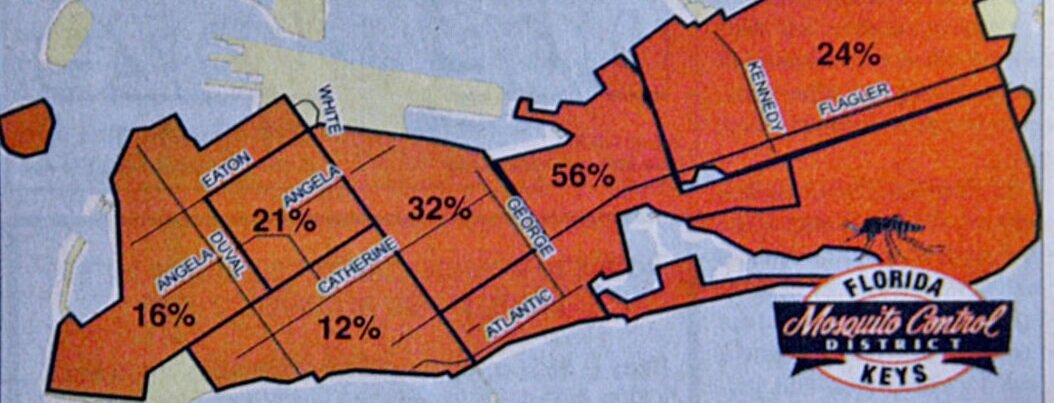Informing Public Health
Summary
In the summer of 2012, I and my colleague Clinton Carlson worked with the Florida Keys Mosquito Control District (FKMCD) to evaluate the efficacy of their public-facing communication efforts regarding dengue fever. In-person interviews with FKMCD staff, county health officials, and Key West residents—nearly 30 people total—provided valuable insight that raised new questions and allowed us to make recommendations to improve FKMCD’s communication efforts.
Impact
In the US, virtually no locally acquired cases of dengue had been reported in continental us since 1945, but in the summer of 2012, the FKMCD were fighting a public health and PR crisis as cases of dengue were on the rise and threatening Key West’s tourism revenue.
Approximately $21,000 in tax dollars was allocated to the FKMCD to develop informational collateral (ie: newspaper, radio, door hangers, pamphlets, etc) to prompt residents to empty standing water to prevent the spread of dengue in Key West, Fl. The messaging lacked focus and clarity, and left residents confused and apathetic about the dangers of dengue how they could help prevent it. Our research delivered a plan to help the FKMCD maximize their budget by streamlining production of collateral by promoting a singular message to increase community engagement and reduce the risk of dengue.
Role
• Research plan
• Heuristic evaluation
• In-person interviews (Key West residents, FKMCD employees, City officials)
• Contextual inquiry via ride-alongs with FKCMD employees
• Usability testing
• Qualitative analysis
Heuristic Evaluation
A review of FKMCD collateral materials revealed disparate messages with no clear call to action, and no brand re-enforcement. The newspaper map graphic (see fig. A) was the latest effort to communicate the risk of dengue fever from water samples taken across the island. The graphic suffered from perceptual, verbal, and contextual issues that ultimately led to increased cognitive effort due to mis-interpretation or mis-understanding of the map resulting in a lack of participation by Key West residents.
fig A: The map required high cognitive effort to decipher.
Disparate messages resulted in a diluted CTA.
Interviews + Contextual Inquiry + Prototype Testing
Key West residents were told that emptying standing water on their property was important, but they were never told WHY.
We conducted interviews with Key West residents to test the map’s efficacy, and engaged in service ride-alongs with FKMCD field operators. We learned that there were competing perspectives regarding the roles between field operators and residents on how to effectively reduce the risk of dengue.
Field operator’s felt frustrated by the residents’ dependency upon them to test and dump standing water on their properties, while residents simply didn’t understand the importance of emptying standing water because they weren’t told why it was important.
The high cognitive effort of the map and lack of action from residents led us to test potential improvements to the primary copy’s call to action.
fig B: Testing potential copy blocks for new CTA. Residents overwhelmingly chose copy block C.
Field research materials.
We engaged residents to test new CTA copy for the map graphic (see fig B). Of the three options, residents responded to the CTA that clearly stated WHY they should empty standing water…mosquito larvae could reach adulthood and increase the risk of dengue.
Recommendations
We made several recommendations would amplify the FKMCD’s message, increase resident participation, and increase brand recognition.
Map graphic: The district wasn’t getting much traction with the map, so along with copy changes from the testing feedback, we recommended the adoption of a color spectrum for the map (similar to those seen in weather maps) along with a legend to decipher the colors, and a more prominent location in the newspaper.
Vehicle messaging and print collateral: Embrace and promote FKMCD branding and focus on a singular primary message (ie: “larvae can reach adulthood in 7 days. Empty standing water in your yard every 3–4 days.”)
Trash can tags: Waste collection ran twice a week in Key West. We suggested affixing weather resistant tags to city trash cans as a twice weekly reminder to empty standing water in their yards.
Suggested trash can tags to remind residents to empty standing water.
